How to Make a Superlight Bike for the Concours de Machines
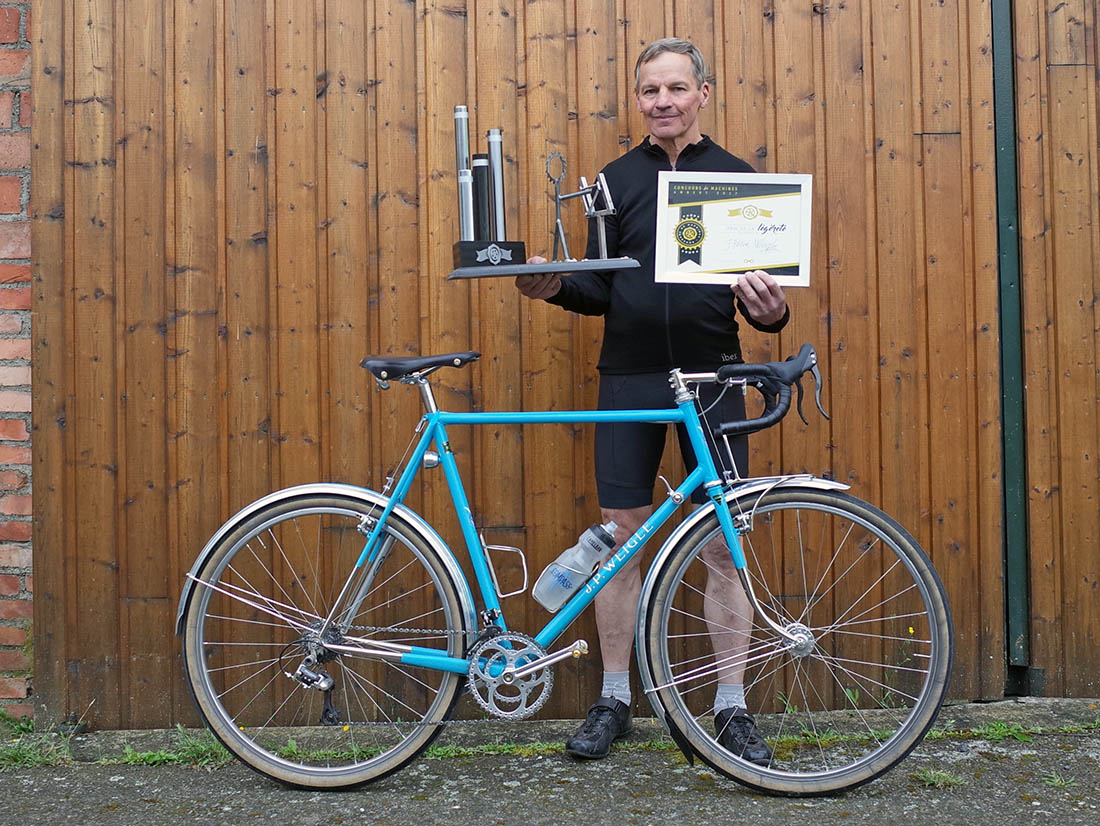
The official results of the 2017 Concours de Machines are in! Peter Weigle’s bike did even better than we thought:
- Lightest bike: First place
- Choice of the jury: First place
- Technical points (bonus for features, penalties for problems): First place
- Zero penalties for technical problems
- Faster than required speed on each stage: zero penalties
- Overall: Second place
We were especially excited to find that the jury appreciated Peter’s bike for its craftsmanship and functionality. Small things like the placement of the headlight make a difference on the road – you don’t ride into a shadow when you corner at night – but they are easy to overlook when evaluating a bike without riding it. The jury consisted of experienced randonneurs who understood the importance of these small details. It appears that they also were impressed by the ease of Rinko’ing the Weigle for travel by car, train or airplane.
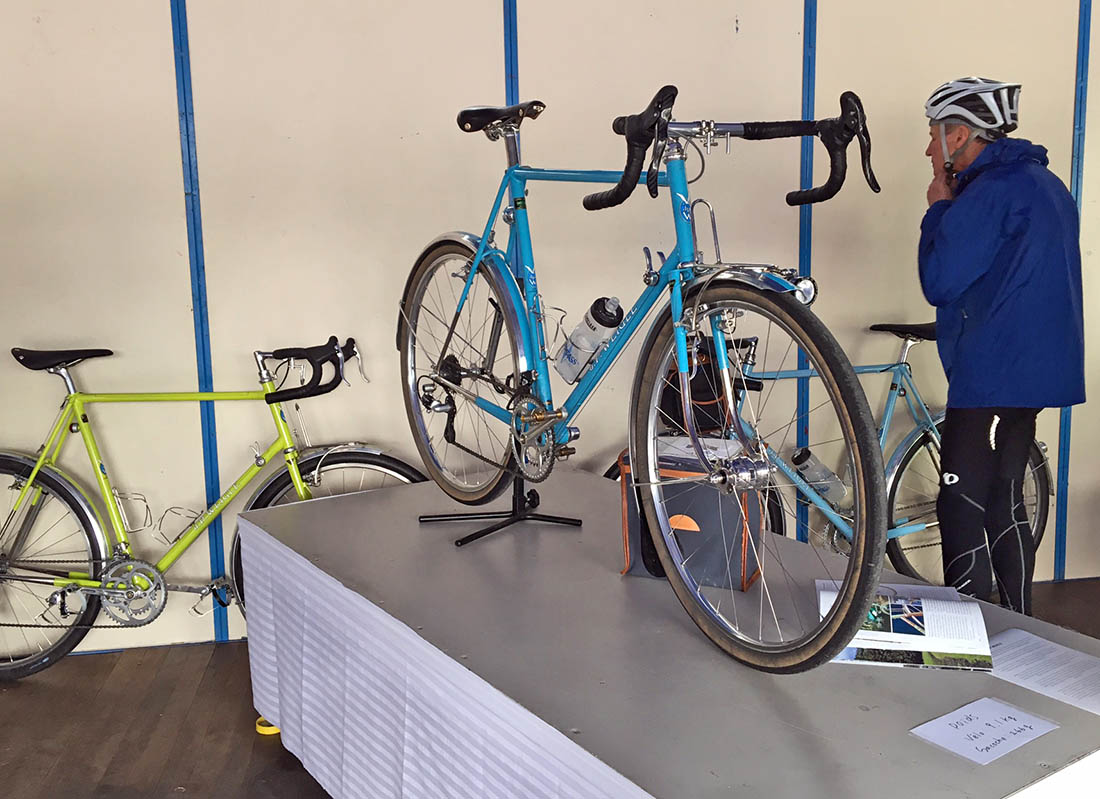
You may wonder why the J. P. Weigle didn’t win first prize. The bike scored lower in three areas that were less about the quality of the bike, but were an important part of the Concours:
- People’s Vote: 6th (out of 24). Most of the visitors were amateur racers participating in that weekend’s cyclosportive, and they probably voted for other, more “modern” bikes.
- Builders’ Vote: 7th. I don’t think it’s fair to ask the builders to vote, since it’s in their interest to vote ‘strategically’ to give their own bike the best chance at winning.
- Documentation: 15th place. Each builder had to submit a presentation that documented the construction of the bike and explained its features. Peter Weigle was so busy building the bike that he didn’t take photos during its construction, and the bike was finished only the evening before the event. We put together the presentation on the train ride to Ambert…
We are honored by the recognition the bike received, and the second place seems entirely fair – the rules were known beforehand. For us, the goal was not to win the event, but to show our vision of the best randonneur bike available today.
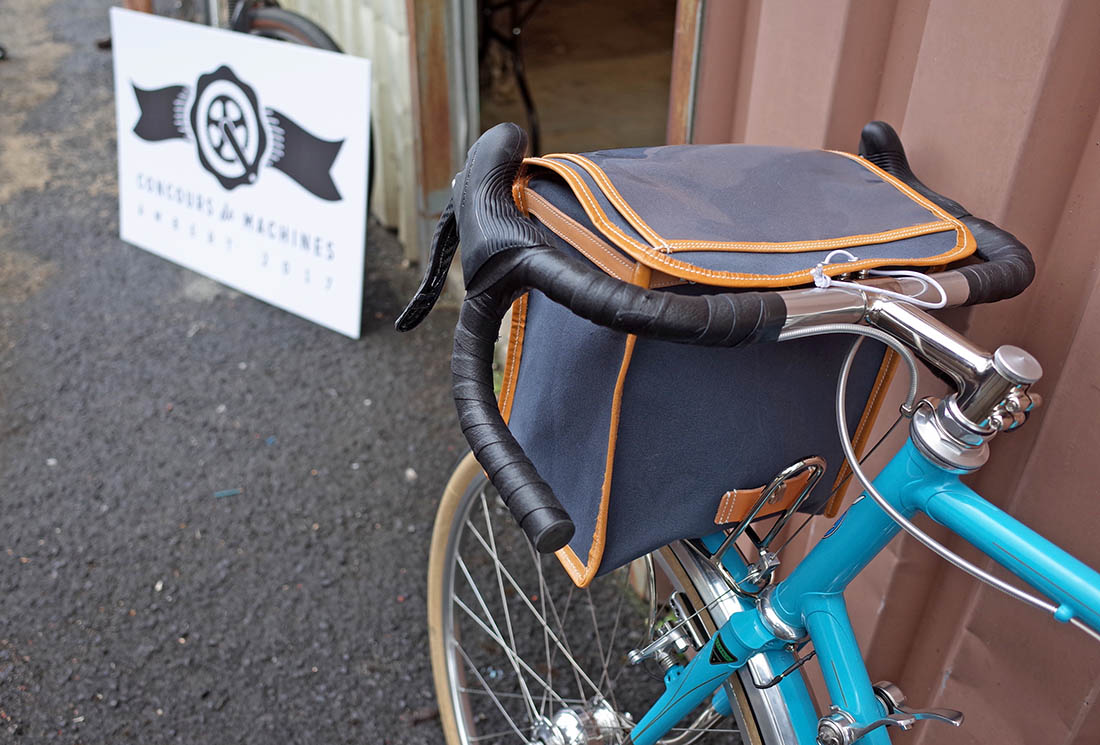
Many observers were astonished by how little the bike weighed: 9.1 kg (20.0 lb) is remarkably light for a bike with full fenders, generator-powered lighting, rack, bell, pump, bottle cages and even a mudflap. The Weigle weighs exactly the same as the lightest carbon bike we’ve tested recently, the Open U.P., without fenders, racks or lights. How can a fully equipped steel bike be so light?
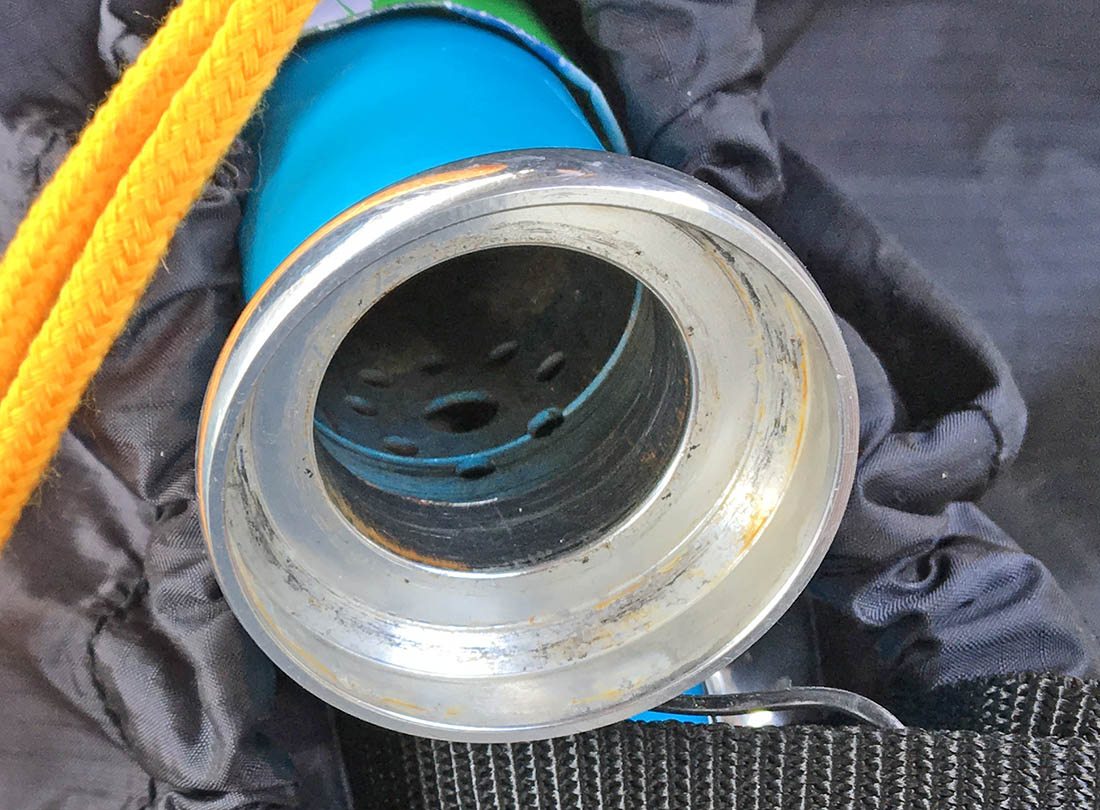
Peter Weigle is a master of trimming unnecessary weight from his frames. He went to the limit on this bike, and he also built a superlight stem and rack. For our report in the next Bicycle Quarterly, we will disassemble the bike and weigh each component to show in detail how the light weight was achieved.
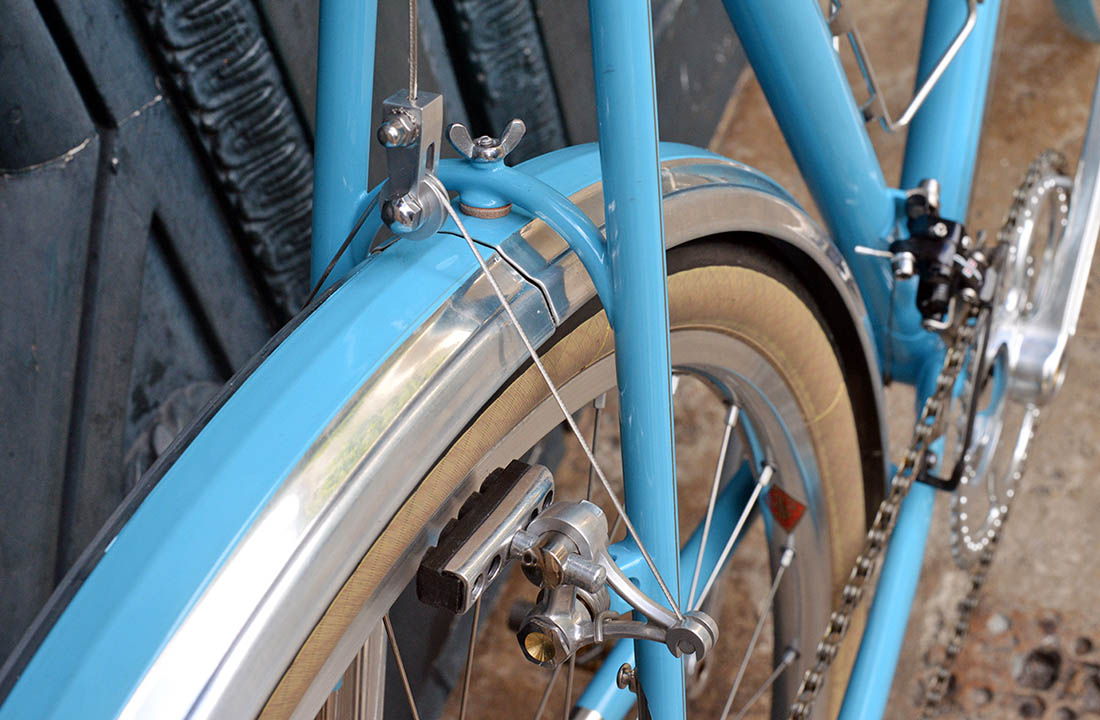
We already can tell you that most of the components are standard parts that either are already available, or will be available soon. We used the Concours de Machines as an opportunity to work with our suppliers and partners to reduce the weight of our parts even further. Here are some of the components we used on the Weigle:
- SON Widebody hub: We used the Widebody version of the SON Delux generator hub even though it weighs a few grams more, because wider flange spacing makes for a stronger wheel – useful on the rough course of the bike test. We asked SON to make this hub for 28 spokes – plenty on a bike with wide tires.
- Pacenti Brevet 650B rims: Finally, 28-hole 650B rims are easily available. Peter Weigle drilled a few extra holes in the rim beds to save a few grams, but otherwise, the rims were standard.
- Rene Herse Maes Parallel handlebars: We worked with Nitto to make our handlebars even lighter. The latest Rene Herse bars are made to our new, exclusive Superlight specifications. (Only for bars up to 42 cm wide – wider handlebars require extra strength to resist the longer leverage.)
- Titanium brake pad eyebolts: The Weigle is equipped with prototypes of the Rene Herse cantilever brakes. The eyebolts for the pad holders are made from titanium. Usually, replacing steel bolts with titanium is not a good idea, because titanium has only half the strength. However, the eyebolts are big to fit over the posts of the pad holders, not because they need to be super-strong – a perfect application for titanium. A limited quantity of these titanium eyebolts is available right now. They fit Rene Herse and Mafac centerpull brakes, as well as classic Rene Herse cantilevers.
- Rene Herse Loup Loup Pass Extralight 650B x 38 mm tires: As hand-made tires, the weight of Rene Herse tires varies a bit from batch to batch. The latest 650B x 38 mm tires happen to be especially light.
- Rene Herse cranks. A little material was removed from the arms, and the chainring bolts were replaced with aluminum, but the standard cranks are only a few grams heavier. Peter Weigle drilled the chainrings mostly for aesthetic reasons – to emphasize that this bike was special.
- Gilles Berthoud Galibier saddle: remarkably light for a leather saddle, yet supremely comfortable. We removed the stiffening bracket – needed only with seatposts that don’t clamp the rails securely – to reduce the weight further.
- Nitto 80 bottle cages: As light as many carbon cages, but removing and replacing bottles is much easier with these cages. Plus, they gripped the bottles securely even on the rough mountain bike trails that made up much of the bike test of this year’s Concours.
- Maware handlebar tape: Made from pigskin, this leather tape is beautiful and comfortable, yet remarkably light.
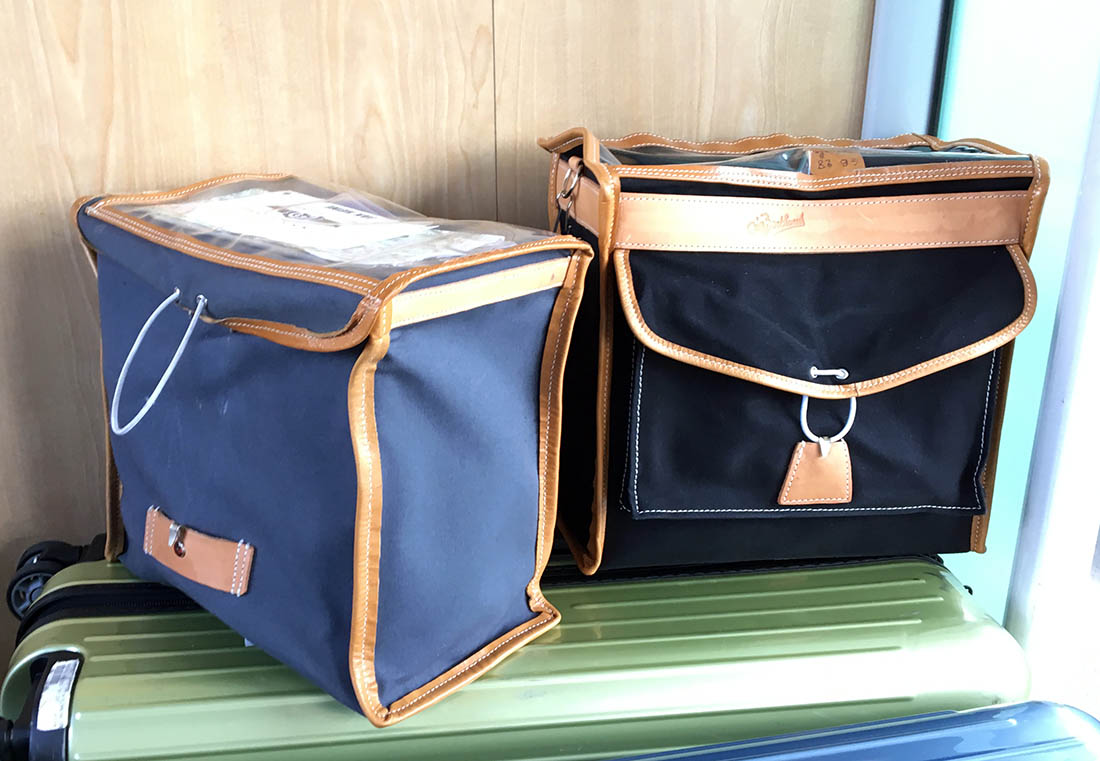
For the Concours, the bikes were weighed with bags and tools. Fully equipped for the road, the Weigle came in at just 9.7 kg (21.4 lb). We chose not to bring any tools, because we had total confidence in the bike. That saved valuable grams. Other bikes carried ultralight tools, but we’ve found that a well-built and well-assembled bike rarely needs work on the road.
Back to the bags, we worked with Gilles Berthoud to make a superlight prototype handlebar bag that weighs just 266 g (left). It uses the same materials as standard Gilles Berthoud bags (right). The weight savings are the result of leaving off all side pockets and reducing the size of the leather trim to a minimum.
Our goal was not to make a crazily-light machine that would last only one weekend, but to show what can be done with functional and durable components, if every part is optimized for light weight and performance. Some parts, like the SON Edelux II headlight, were chosen for their function more than their light weight. There were a few superlight parts, like the titanium bottom bracket, the Campagnolo Record titanium cassette, and the titanium Crank Brothers pedals, but they are all proven components that should work well under a smooth rider. Apart from the superlight frame, there isn’t much magic in the bike, just a careful choice of components. When spec’ing the bike, we avoided anything that could compromise reliability or performance. And since this will be my own bike, I look forward to riding it for many years to come.
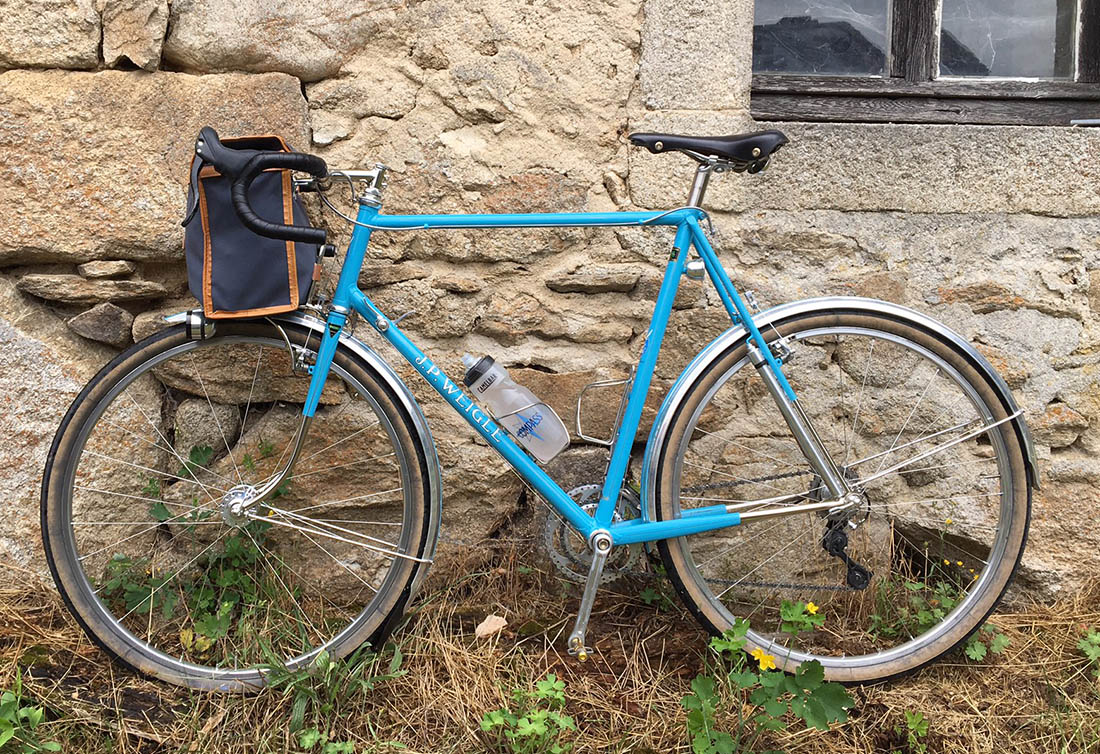
Click on the links in the text to find out more about the components. Click here to read Cyclodonia’s report about the bike.


